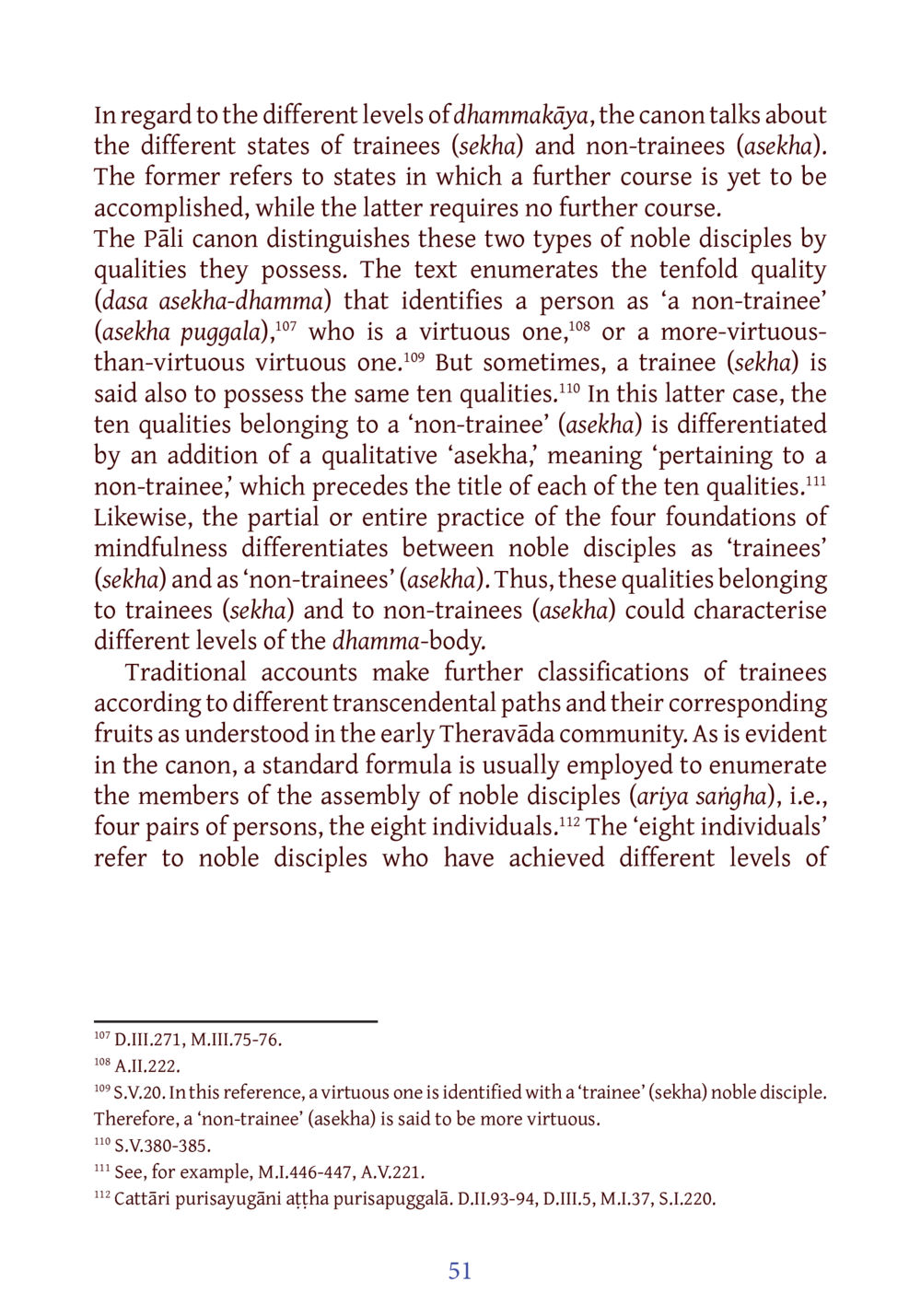Understanding the Levels of Dhammakāya and Noble Disciples : หน้า 72/141
DIRI Journal : หน้า 72/141 Explore the distinctions between trainees (sekha) and non-trainees (asekha) in the context of Dhammakāya teachings.
0 ครั้ง

สรุปเนื้อหา
The text elaborates on the different levels of dhammakāya, categorizing trainees and non-trainees based on their qualities and practices. Trainees are seen as individuals who still have further courses to undertake, while non-trainees have completed their training. The Pāli canon outlines ten qualities that identify non-trainees and highlights that trainees can also possess these qualities, though they are described differently. The practice of mindfulness further delineates these two groups among noble disciples. Traditional teachings provide deeper insights into the classifications of trainees, linking various transcendental paths and their fruits in the early Theravāda community. The assembly of noble disciples is highlighted, reinforcing the notion of progression within the teachings. For more detailed study, visit dmc.tv.
หัวข้อประเด็น
-Levels of dhammakāya
-Distinctions between sekha and asekha
-Pāli canon teachings
-Qualities of noble disciples
-Theravāda Buddhist community
ข้อความต้นฉบับในหน้า
หน้าหนังสือทั้งหมด













































































































































